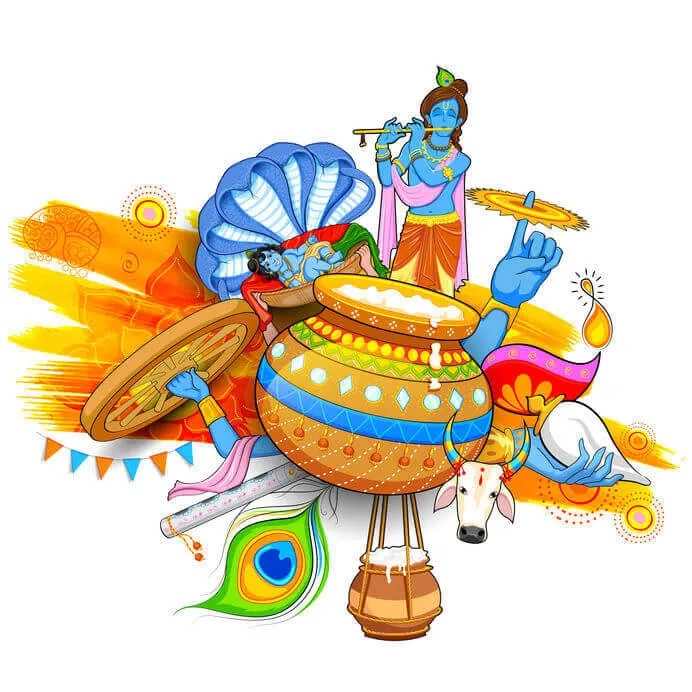Devotees mark this auspicious occasion by observing a fast and praying to Krishna. They adorn their homes with flowers, diyas and lights while temples are also beautifully decorated and lit

The Hindu festival of Janmashtami, also known as Krishna Janmashtami, Gokulashtami, Krishnasthami or Srijayanti, marks the birth of Krishna ie the eighth avatar of Vishnu. The largest celebration of this festival takes place in the cities of Mathura and Vrindavan, where Krishna is believed to have been born and spent his growing up years, respectively.
Date and time
Krishna Janmashtami is marked on the eighth day of the dark fortnight in the month of Bhadrapada (July-August) in India. This year, there is a lot of confusion regarding whether Krishna Janmashtami will be celebrated on August 18 or August 19.
According to the Vedic Panchang, Ashtami Tithi will begin from 9:21 pm on August 18 and will end at 10:59 pm on August 19 so it will be celebrated on both days while the Nishith Puja time begins from 12:02 am on August 18 and ends at 12:48 pm on the same day.
History
According to Hindu mythology, Krishna, the human incarnation of Vishnu, was born on this day to destroy Mathura's demon king, Kansa, the brother of Krishna's virtuous mother, Devaki. Krishna was born on the eighth (Ashtami) day of the dark fortnight in the Bhadrapada month (August–September) in Mathura and was Devaki and Vasudeva's son.
When Krishna was born, Mathura was ruled by his uncle, King Kansa, who wanted to kill his sister's children as a prophecy said that the couple's eighth son would cause Kansa's downfall. After the prophecy, Kansa imprisoned Devaki and Vasudeva and killed off their first six children.
However, at the time of the birth of their seventh child, Balram, the foetus mystically transferred from Devaki's womb to Princess Rohini's. When their eighth child, Krishna, was born, the entire palace went into slumber and Vasudeva rescued the baby to Nand Baba and Yashodha's house in Vrindavan.
After making the exchange, Vasudeva returned to the palace with a baby girl and handed her to Kansa. When the evil king tried to kill the baby, she transformed into Durga, warning him about his impending doom and in this way, Krishna grew up in Vrindavan and later killed his uncle, Kansa.
Celebration
Devotees mark this auspicious occasion by observing a fast and praying to Krishna. They adorn their homes with flowers, diyas and lights while temples are also beautifully decorated and lit.
The temples of Mathura and Vrindavan witness the most extravagant and colourful celebrations as Krishna is believed to have been born and spent his growing years there. Devotees perform Raslila to recreate incidents from Krishna's life and to commemorate his love for Radha and since Krishna was born at midnight, an idol of an infant Krishna is bathed and placed in a cradle at that time.
Maharashtra also sees joyous celebrations of this festival as people enact Krishna's childhood endeavours to steal butter and curd from earthen pots. This activity is called the Dahi Handi celebration for which a matka or pot is suspended high above the ground and people form a human pyramid to reach it and eventually break it.